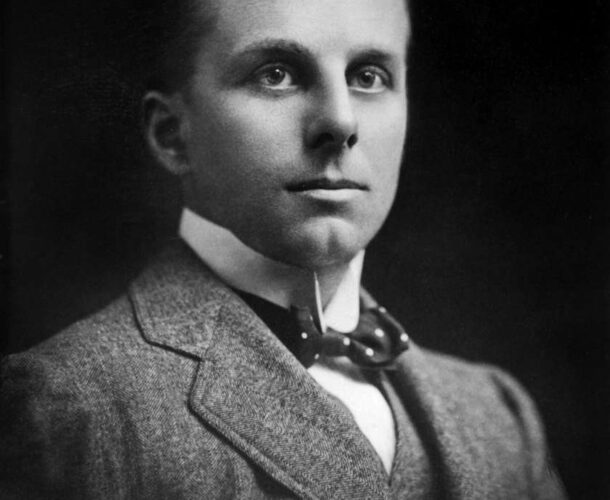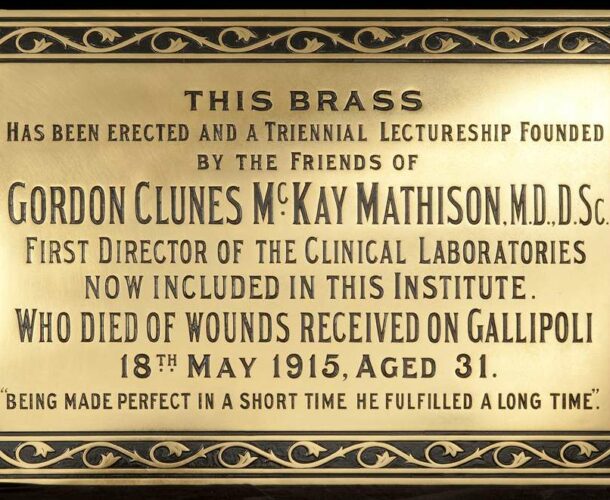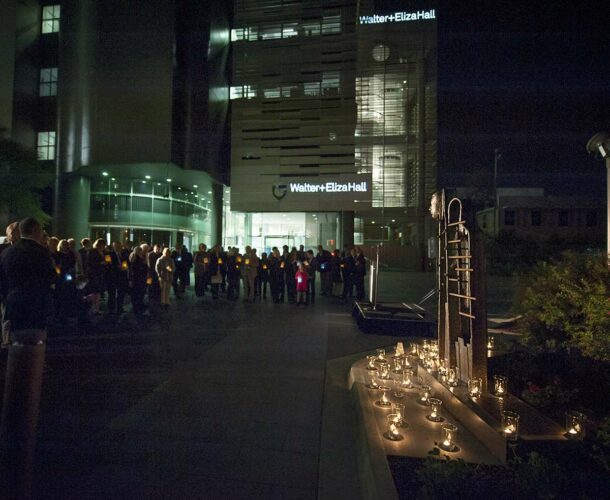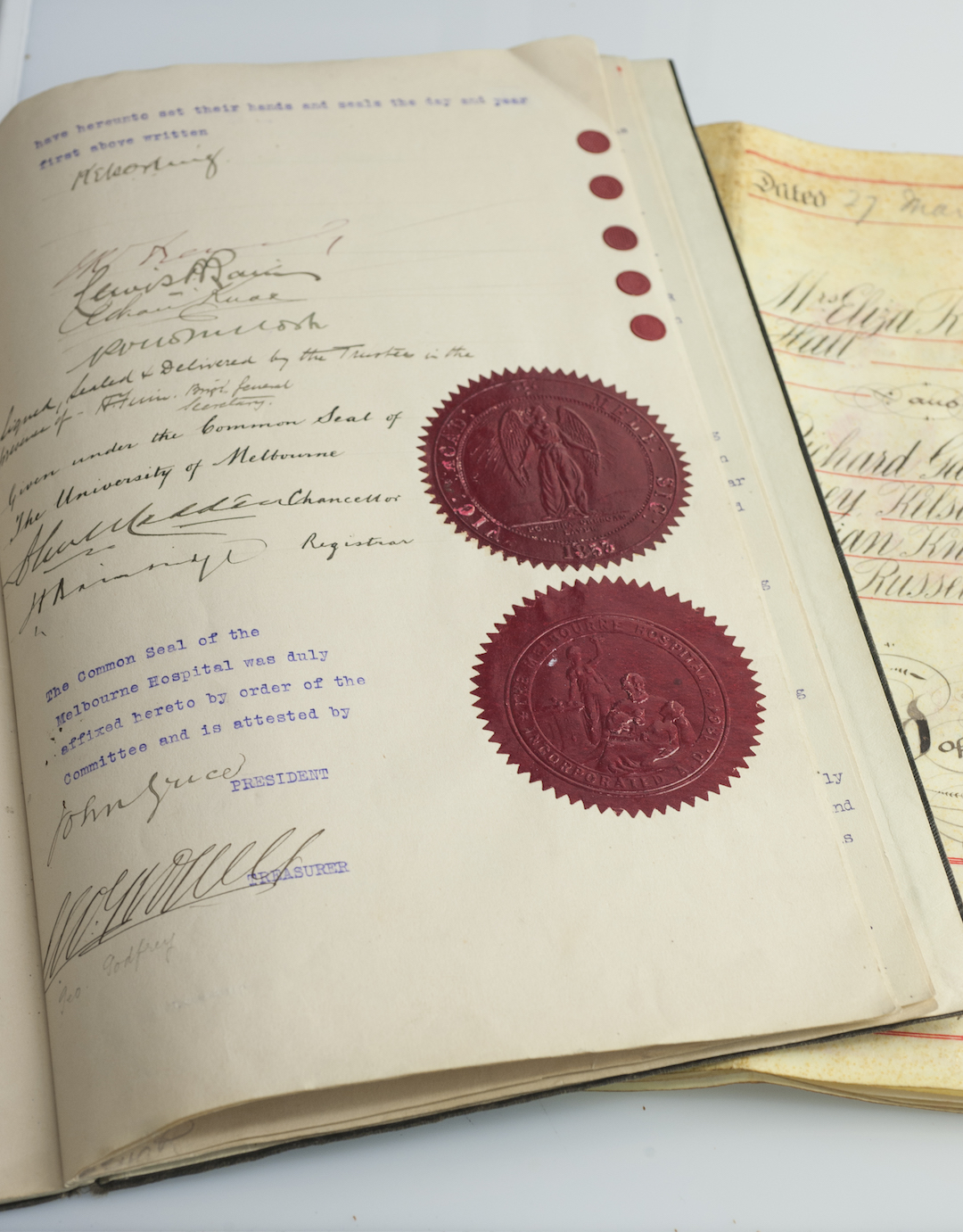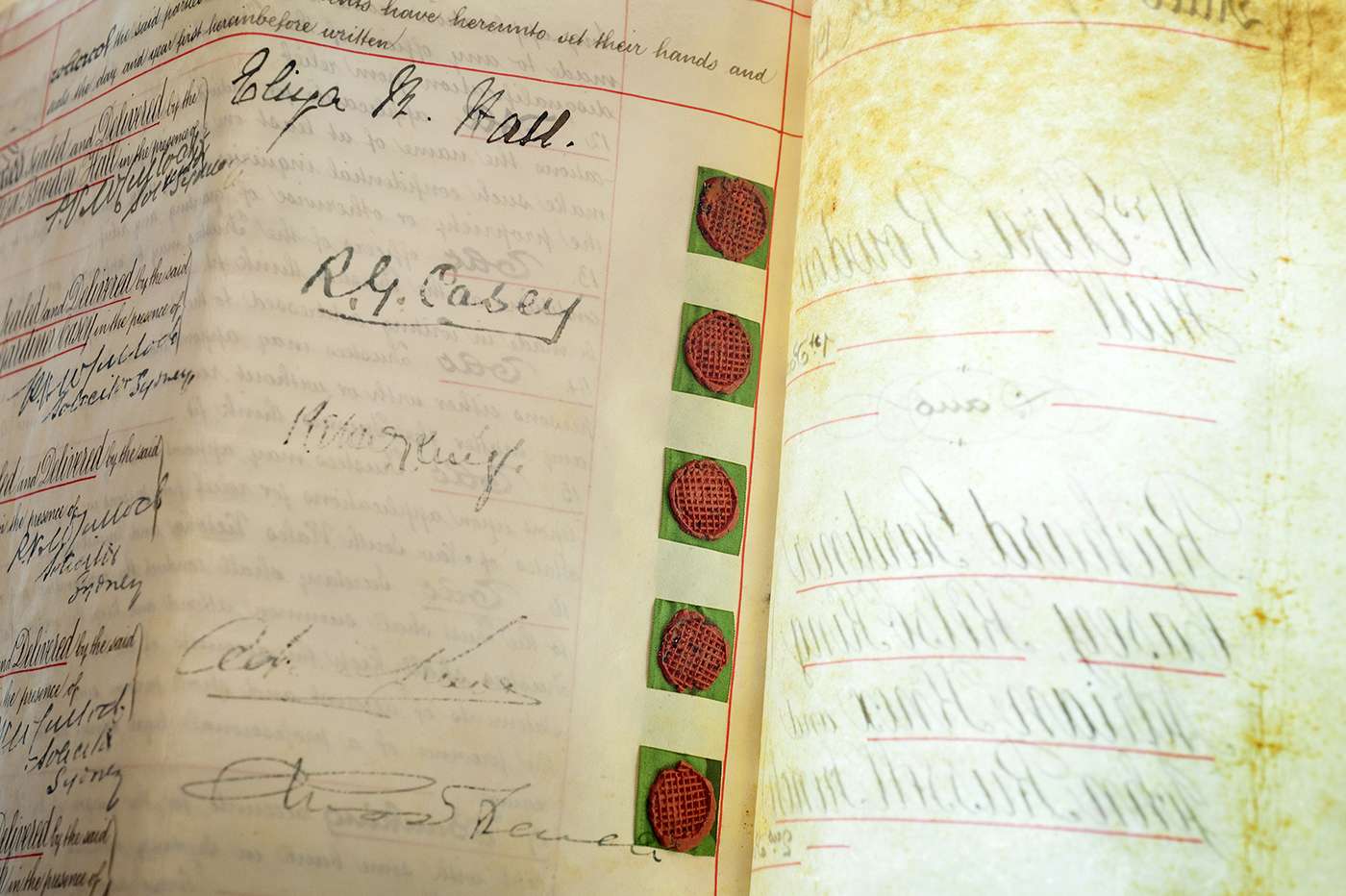Dr Gordon Clunes McKay Mathison, who was to have been the institute’s first director, is killed in World War I before he can take up his post.
A highly esteemed researcher and a celebrated army doctor, Mathison’s loss is widely mourned.
Professor EH Starling of University College, London, offers one of many tributes: “For the science of medicine throughout the world the loss is irreparable.”1
According to historian Ross McMullin, “no one, none of the 60,000 Australians who died in the war, was a greater loss to their nation. No one exemplified Australia’s lost generation as much as Mathie.”2
Gordon Clunes McKay Mathison, first director designate
In January 1915, the notion to establish an institute for medical research in Melbourne was fast taking shape. Men of strong will and grand ambition were competing to direct its scope, among them the Dean of Medicine at the University of Melbourne, Professor Sir Harry Allen.
Allen had in mind an ideal candidate to lead the new institute. He fired off a note with his thoughts to Richard Gardiner Casey, the trustee of the young £1million Walter and Eliza Hall Trust. Casey had come to Allen only a couple of months earlier with the idea and the money to endow a research facility.
“If we could induce Mathison to accept the Directorship of the new institute, we should be most fortunate,” Allen wrote to Casey.
A brilliant young mind
Dr Gordon Clunes McKay Mathison was born in Stanley, near Beechworth, the son of two school teachers. After the family moved to Melbourne – both his parents taught at Elsternwick State School, which he attended – he won a scholarship to Caulfield Grammar School.
An excellent student, he went on to study medicine at the University of Melbourne, graduating in the class of 1906. He then won a scholarship to London to pursue a Doctor of Science at University College, where he researched the physiology of respiration, returning to Melbourne in 1913 to take up a leadership role with the clinical pathology laboratories at the Melbourne Hospital (today’s Royal Melbourne Hospital). He was already widely recognised as a brilliant researcher.
Outbreak of war
But as Allen maneuvered to have him installed as the director of Melbourne’s emerging research facility, Mathison was preparing to go to war. “(Now), like so many leading members of our staff, he has received leave of absence to serve in the hospital unit of the expeditionary force,” Allen wrote to Casey.
Nonetheless a couple of months later, on 23 April 1915 when the Melbourne Hospital committee formally accepted the plan for the Walter and Eliza Hall Institute of Research in Pathology and Medicine, it included a resolution to offer the directorship to Mathison.
He never received the letter. In Egypt Mathison had been working with the 2nd Field Ambulance, but then he was temporarily assigned to the 5th Battalion as its doctor.


